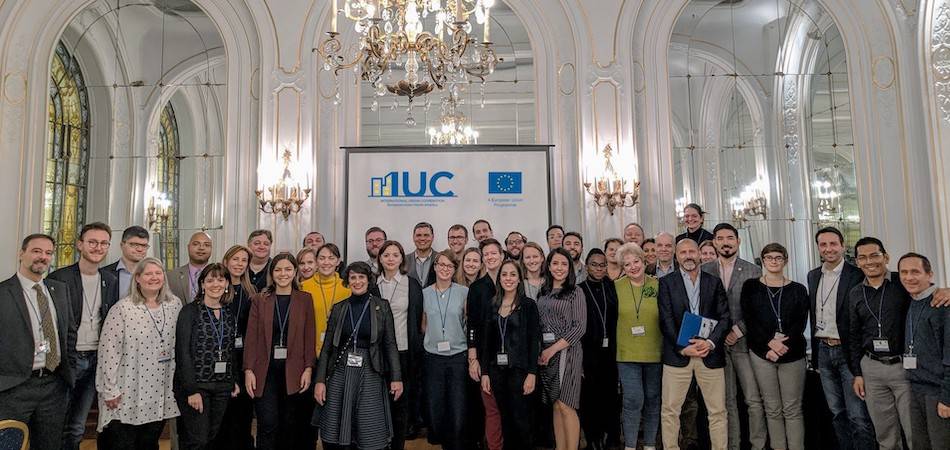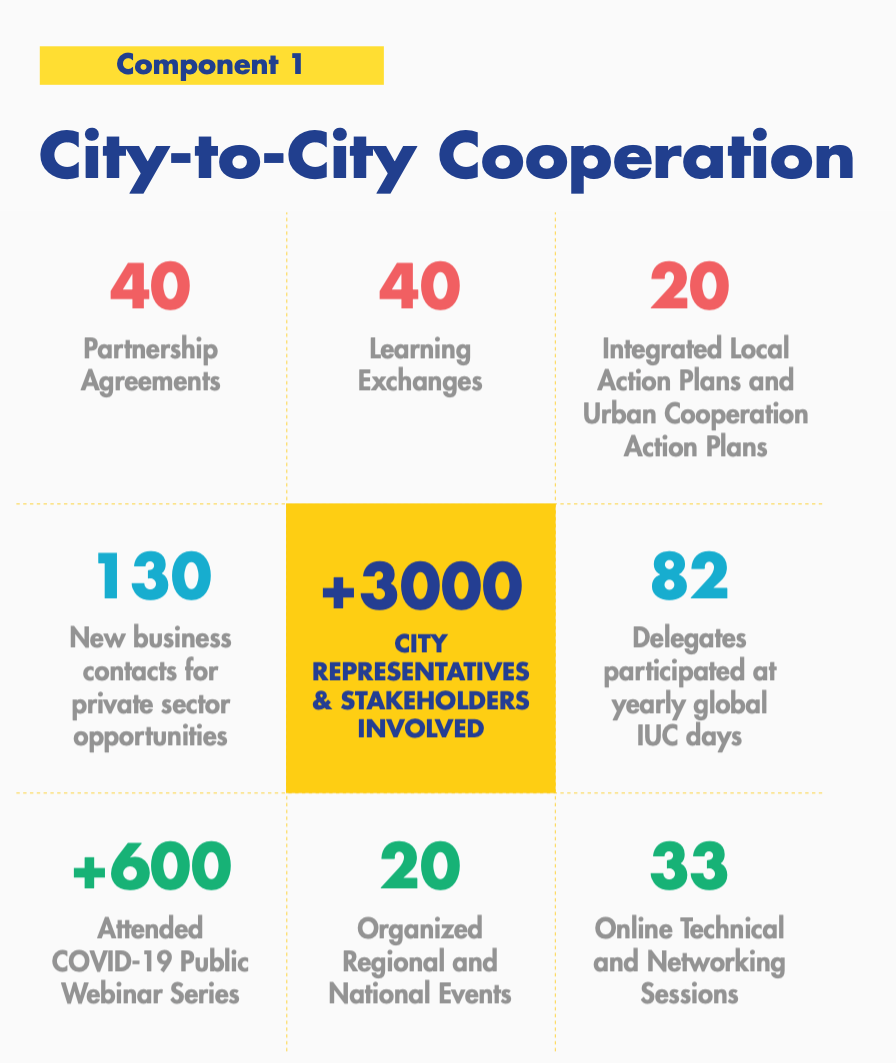
The IUC programme in North America (IUC-NA) worked across Canada, Mexico and the United States (US) to bolster sustainable urban development. The programme has demonstrated the potential of international cooperation to drive change even across such diverse countries with vastly different local contexts. The IUC-NA team recently reflected on the programme’s past four years; what follows is based on their reflection.
 North America represents a highly diverse region of cities, with varied reasons for joining the IUC programme. In 2017, when the programme launched, US cities felt it incredibly important to engage in city to city collaboration on sustainable urban development. However, in many cases, they did not have access to as many networks and opportunities for collaboration as EU cities, leading to a genuine eagerness to seize the opportunity presented by the IUC. Cities in Mexico, by contrast, are much more used to working and collaborating internationally. In their case, however, the IUC held a unique opportunity for genuine two-way collaboration in which both partners share and learn from one another. Canada also has a strong tradition of collaboration between cities, which made the IUC a natural and welcome fit.
North America represents a highly diverse region of cities, with varied reasons for joining the IUC programme. In 2017, when the programme launched, US cities felt it incredibly important to engage in city to city collaboration on sustainable urban development. However, in many cases, they did not have access to as many networks and opportunities for collaboration as EU cities, leading to a genuine eagerness to seize the opportunity presented by the IUC. Cities in Mexico, by contrast, are much more used to working and collaborating internationally. In their case, however, the IUC held a unique opportunity for genuine two-way collaboration in which both partners share and learn from one another. Canada also has a strong tradition of collaboration between cities, which made the IUC a natural and welcome fit.
The IUC-NA team had a clear overarching goal: to help cities meet sustainable urban development goals that they themselves set. In this way, the team acted as facilitators bolstering bottom-up processes.
Meeting the city pairings’ goals did not, however, come without challenges. It took time before the IUC programme established a strong track record and collection of case studies to help cities visualise and structure their work. Furthermore, a lack of buy-in at the national level in the US proved challenging, while in Mexico and Canada, election cycles saw administrations and key stakeholders change partway through the programme. The IUC programme does not provide financial support for pilot project implementation, which was an additional hurdle for some cities, particularly as the COVID-19 pandemic led some traditional funding sources to be cancelled or suspended.
Despite the challenges faced – both foreseen and unforeseen – pairings in all three countries were highly successful in using the IUC programme to drive forward their sustainable urban development goals.
Mérida (Mexico) and West Athens (Greece), for example, were able to work through initial challenges defining the scope of their work – exacerbated by vastly different local governance structures – to forge a powerful and focused partnership. This resulted in Mérida likely being the first city in Mexico to apply the European “Sustainable Urban Mobility Planning” (SUMP) approach, with support from the Mayor and local government. As for West Athens, they benefited greatly from learning new methods from Mérida on how to include citizen engagement in their SUMP implementation.
Fredericton (Canada) and Parma (Italy) took a very different approach. They were the only IUC pairing to focus specifically on gender inclusion, engaging in research to help understand the barriers to female participation in local government leadership positions, and to develop a tool and methodology to examine the impact of legislative intervention on these barriers.
The onset of the COVID-19 pandemic created a plethora of unforeseen challenges to international cooperation. Although the pandemic hit just halfway through their period of cooperation, San Diego (US) and Strasbourg (France) managed to nonetheless work together in a concrete and consistent way. They effectively adapted their technical site visits to be online sessions and, in fact, used this as an opportunity to include a broad range of stakeholders from their cities, as well as representatives from other cities within the region. They are determined to continue working together and learning from one another and have already influenced policy and practice in each other’s cities.
The impact of the IUC programme has been unique in each of the North American countries. In the US, the programme fostered sustainable urban development capacity-building and knowledge-sharing; in Canada, the IUC offered cities the opportunity to deepen and expand their existing partnerships, and to strengthen their relationships with the EU, which extended to opening up new business relationships (e.g. in the clean tech sector). In Mexico, the programme offered the opportunity for Mexican cities to share their knowledge and expertise with EU cities across topics such as citizen engagement, building adaptation and resilience strategies, and digital innovation. For more information on the impact of the IUC in North America, read on here.
Across the board, the programme’s success hinged on cities being well-matched. This ensured that cities with comparable or complementary sizes, governance structures, physical geographies, sustainable development challenges, and experiences in international cooperation could forge fruitful and lasting partnerships. Once matched, pairings thrived when provided with consistent and knowledgeable support and expert advice. This ensured that cities were supported in creating action plans, designing learning exchanges, and staying on track to meet their goals.
Learning exchanges, technical visits and study tours proved crucial. These must include the right delegates to ensure focused and fruitful exchange. Exchange should be varied, including networking opportunities, expert knowledge-transfer visits, and exchanges which utilise workshops, presentations, discussions and site visits.
These are merely a few examples of the insights gained by operating the IUC programme in North America. Both the IUC-NA team and its participating cities have learned a lot over the course of the programme, and look forward to continuing to engage in its second phase: the IURC. By building on the rich successes already achieved, the region is prepared to reach an even higher level of success and impact, driving sustainable urban development throughout North America and beyond.
Header image and infographic both provided courtesy of IUC North America.